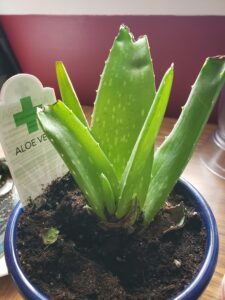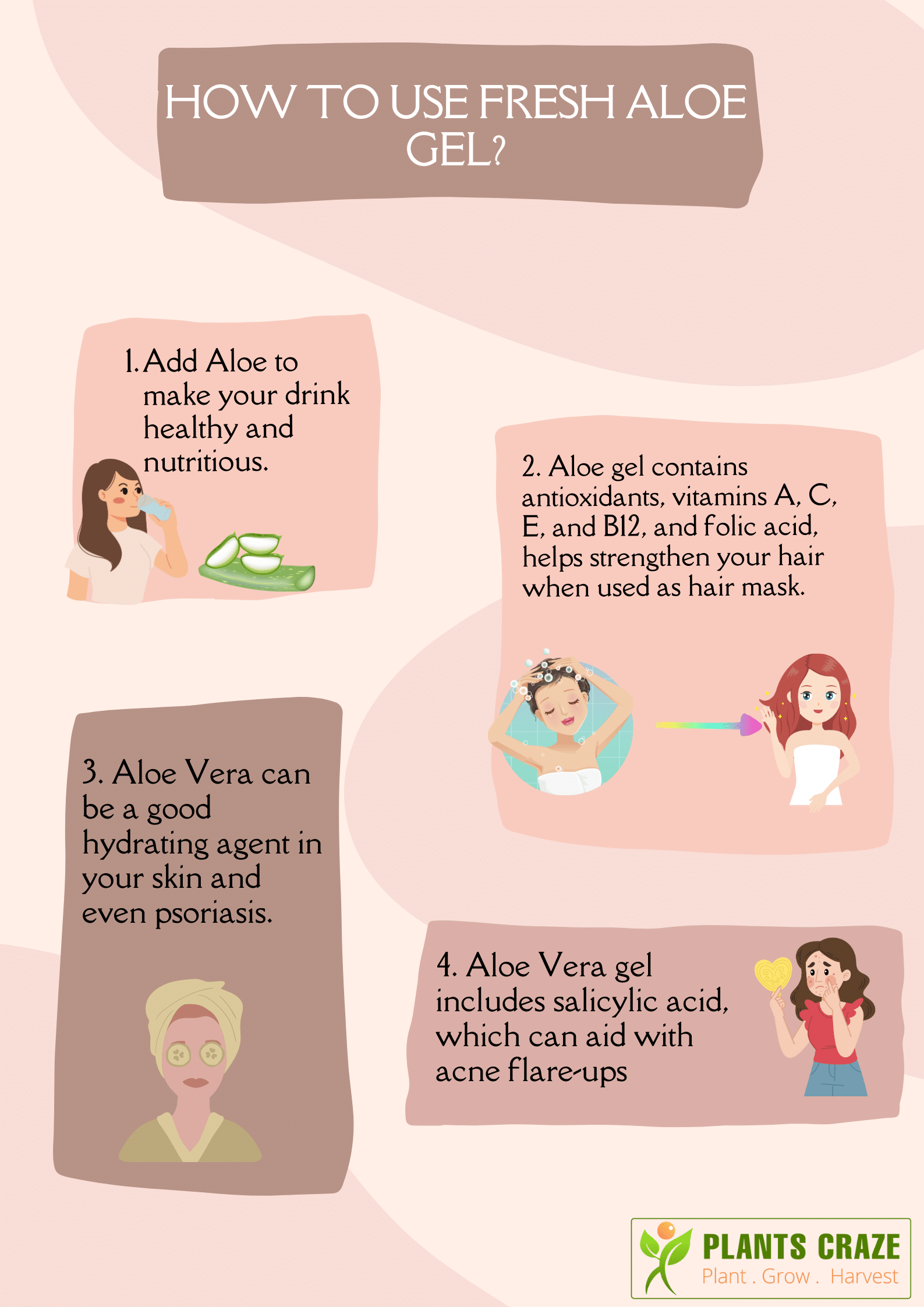If your Aloe Vera is grown enough with more than ten leaves, you can easily harvest it. But do you know how to cut Aloe Plant without killing them?
Make sure you have saved at least 5-6 leaves for the Aloe to photosynthesize. Learn more regarding pruning the Aloe leaves successfully.
Table of Contents Show
Reasons to Cut Aloe Vera Plant
Aloe Plant’s emerald, fleshy foliage that resembles jagged knives and flourishes in a stunning rosette arrangement of circular arcs is loaded with multi-function leaf extract.
However, the plant’s health and growth rely on how well they are maintained, which requires Aloe Vera Plant to be cut and saved from killing.
Let’s have a look at a few more reasons.
- Removing dead or dying leaves: Any dead leaves or stump can serve as the initial point or a build-up receptacle for insects or disease, which can travel to other plant sections and cause severe damage. You would not want your plant to waste resources to keep non-viable leaves alive.
- Maintaining the desired shape: Aloe Vera plants frequently develop to heights surpass the space available. In such cases, the plant tends to wilt away.

- Enhancing healthy growth: On a large Aloe Plant, anything besides healthy green leaves is soaking up the Aloe ‘s resources that would otherwise go into producing new healthy green leaves full of Aloe Vera juices.
- Further propagation: You can directly cut and repot an Aloe leaf after callus formation.
Ideal Time to Cut Aloe Vera Plant
Aloe Vera plants are quickly growing succulents, so pruning them once or twice a year should suffice your concern about plant grooming.
Wondering about the best time to cut and propagate your Aloe? Spring or Summer is your answer!
The leaf is ripe and ready to pluck at the beginning of spring when the edges of the leaves turn rosy.
If you have grown Aloe for medicinal purposes or cosmetic benefits, harvest the outer leaves whenever you need one or as per your requirement.
An older plant of 2-3 years has border leaves with more flesh inside, which works best for gel extraction.
You can’t cut these plants very often because every snip removes many of the vitamins that the plant requires to remain healthy and alive.
Did you know that the leaflets of Aloe Plants contain 95% water? Because they are succulents, they need a lot of water to keep their foliage alive.
Things to Keep in Mind while Cutting Aloe Vera Plant
Cutting appears to be a simple operation upon first glimpse: you pick up your scissors or trimmers and get going. Not really!
This could aid in supporting the health and attractiveness of your Aloe Plant if performed improperly, although it can cause permanent damage with a little mistake.
So, concentrate on the more prominent and higher foliage instead of plucking the smaller lower leaves.
Similarly, extracting many leaves depletes stored reserves, impacts future development, and reduces the photosynthesis rate.
Numerous irregular pruning cuts can cause the Aloe to die.
It is also recommended not to remove more than a few sections simultaneously. Invariably leave the Aloe plant with leaves intact to ensure enough energy production via photosynthesis.
How to Cut Aloe Vera without Killing It?
It is simple to grasp how to cut an Aloe Vera Plant to benefit from its healing powers.
You only need a sharp paring blade or scissors. And, of course, an Aloe Vera Plant with plenty of leaves to cut.
To maintain your plant’s appearance and health, eliminate a whole leaf when cutting an Aloe Plant.
- Inspect the plant for any dried, dead or discolored leaf to be removed.
- Hold the outermost leaves of a mature Aloe Plant. Cut the leaf as near the main stem as doable.
- Ensure not to trim only the tip to avoid cutting scars on the foliage. Snipping a leaf tip will result in a brown-tipped leaf.
Your Aloe Vera plant will develop new leaves after you cut them. However, seeing new growth might take two weeks to a month.
Moreover, gardeners tend to use healthy cuttings for propagation.
From my experience, I found that the leaves and stems are completely covered in gel, and I have never been able to propagate one with this method before.
Tips to Take Care of Aloe Vera Plant After Cutting
After you cut the Aloe Vera Plant, here is what you should do to avoid killing them.
- Keep in the sun for at least 6 hours every day.
- Relocate it closer to the window, change positions, or utilize a grow light in the winter to solve the problem.
- Maintain a temperature of 60 and 85 degrees Fahrenheit around the plant, similar to most houses.
- Avoid overwatering; as for most succulents, Aloe prefers a little dryness. Let the top of the soil (2 inches) dry completely before watering your Aloe .
- To minimize root rot and withering, Aloe Plants require well-draining soil. Perlite, sand, or lava rock can be used to make the potting mix porous.
- A half-strength mixed houseplant fertilizer or fish emulsion could be used once in the summer or springtime.
Avoid nourishing the Aloe during the colder and darker months. The plant is taking a break!
How to Use Fresh Aloe Gel?
Most gardeners grow Aloe Vera for more than decor purposes, its benefits and uses are ineffable.
First, you need to cut the thorny sides of the Aloe and let it sit in normal water to remove the latex. Latex is a yellow liquid that may irritate your skin and eyes.
Now cut the Aloe into two halves, scoop out the gel, and enjoy the benefits.

Not just an instant relief provider for skin irritation and burns, the goodness of Aloe ranges from hair care and skin care to a healthy drink.
Conclusion
Most people typically tolerate Aloe Vera, but for someone with any medical conditions, pregnant or breastfeeding, keep a distance from consuming the plant.
Nonetheless, go ahead and cut that Aloe Plant you have been dying to get your hands on.
